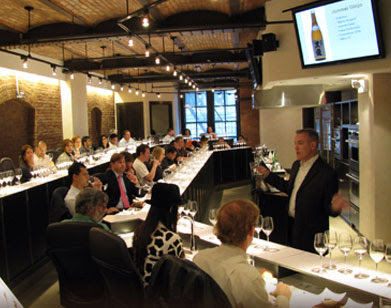My main discovery in visiting the South Slope outpost Smolen Bar and Grill—Tyskie, a Polish beer, on tap is mighty tasty. And begin served beers in special liter glasses in kinda cool.
A Beer at...Smolen Bar and Grill
Smolen Bar and Grill, at Fifth Avenue and 22nd Street in Brooklyn, flies so far under the radar that, from a certain point of view, it barely seems open at all. They have a phone number listed, but it’s not in service. And, on a recent night, only the lights around the bar were flicked on, leaving one to feel along a dark corridor to where the barmaid promised the bathroom was.
The corner building, at 708 Fifth, is built like a brick bomb shelter, a couple small windows indicating life might be stirring inside. A huge red-and-white sign, with figures of eagles on either side, screams that you’re in the right place. The sign’s design scheme is odd for a bar, but not for a Polish bar, which this is. Inside you’ll find a miniature of the red-and-white Polish flag, a picture of Polish Pope John Paul II and —best of all—the excellent Polish beer Tyskie on tap. It’s served not in pints, but half-liter glasses. Also on draft is something called Pat’s Special Brew, named after the owner. But I was told that nobody liked it, and it was not popular.
On an average night, you’ll probably find a few Polish-Americans bending elbows here, survivors of this once predominantly Polish neighborhood. But the evening I went, my company was a sextet of thin, talkative hipsters and a 69-year-old bartendress in whose mouth butter would not melt. This lady couldn’t tell me much about the place, except that it was so old she remembered her parents taking her there when she was a child. Also, while the ornate, oddly sectionalized wooden bar is original, there used to be a grill (no more) and a row of booths along the south wall, where several sets of tall tables and chairs now stand. I’d venture a guess that somewhere under those acoustical tiles overhead is a tin ceiling and either a wooden or tile floor lies beneath the yawning expanse of linoleum.
Once the hipsters left en masse, I had Smolen to myself for a good hour. I watched TV. I could have been in Pat’s den.
— Robert Simonson

























